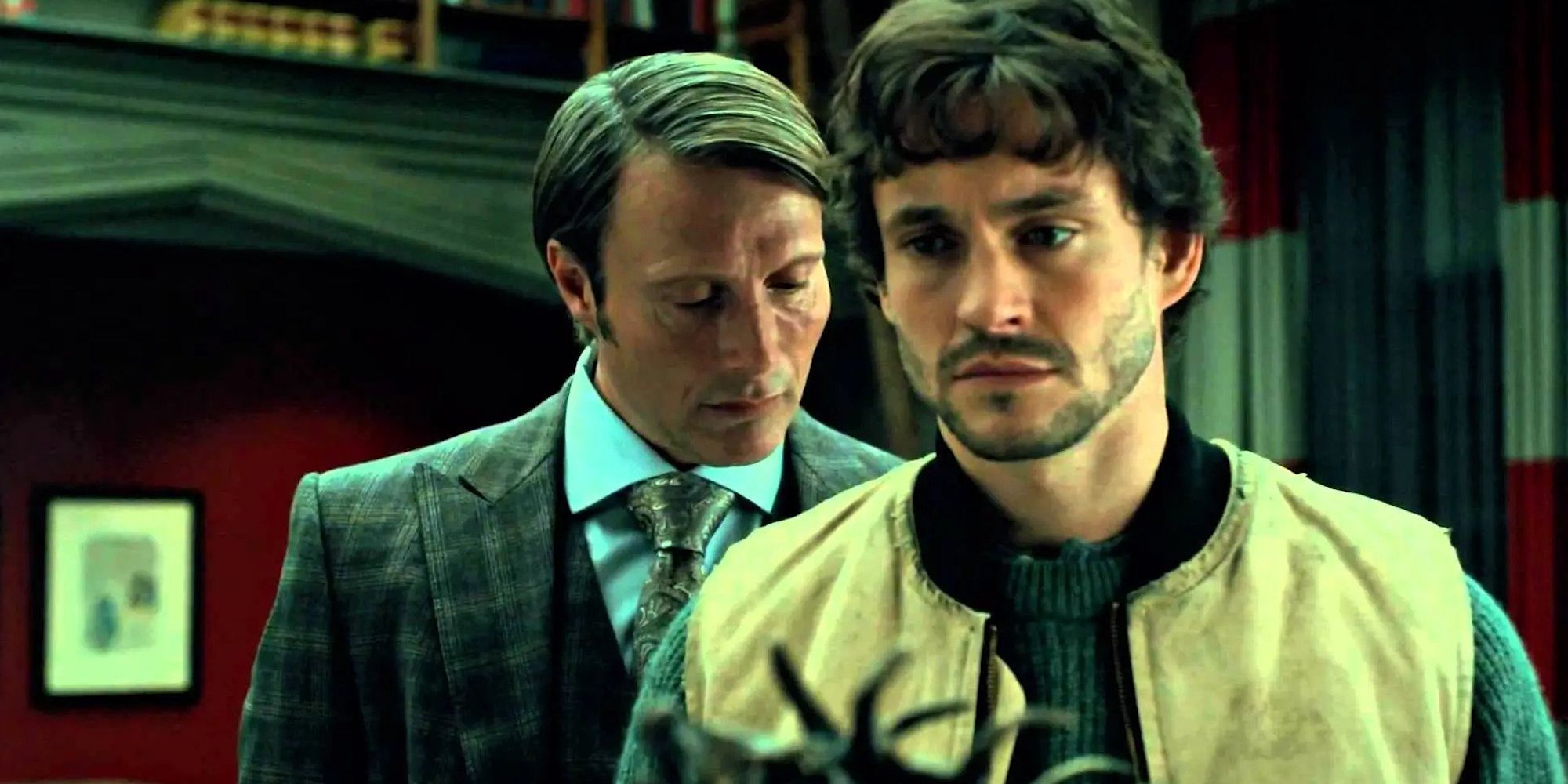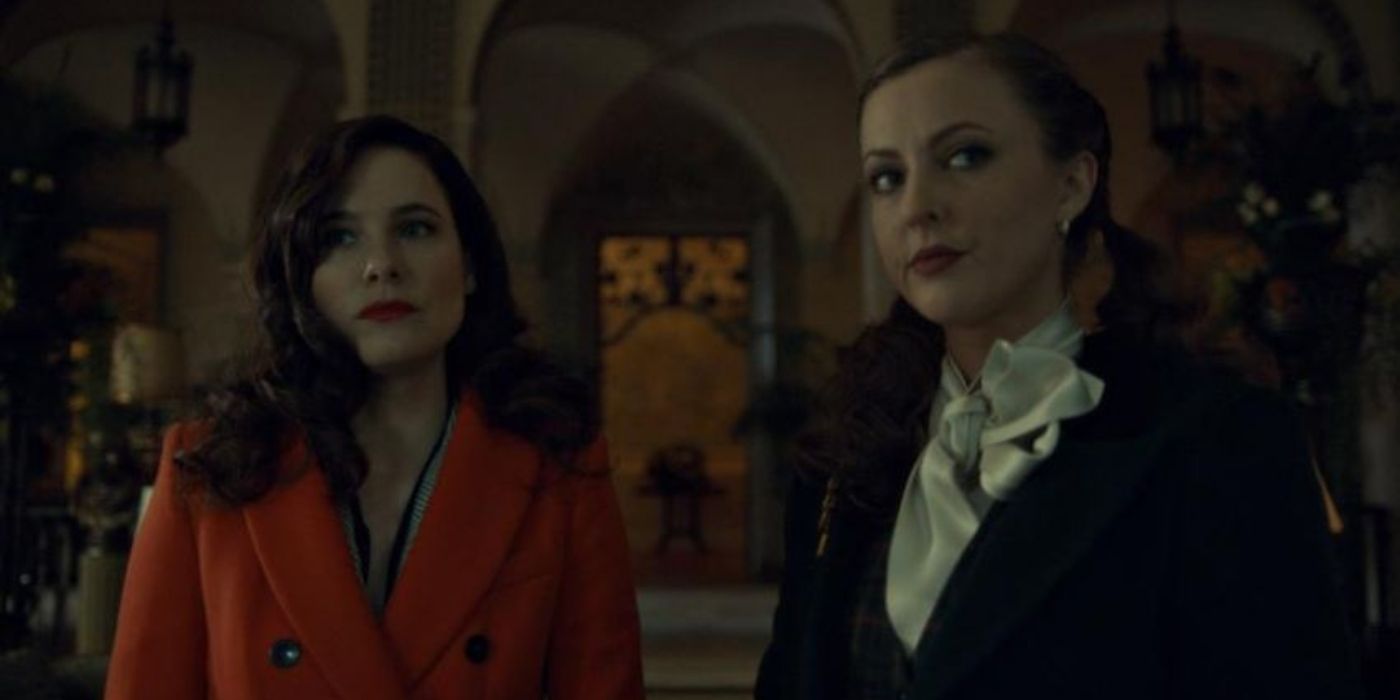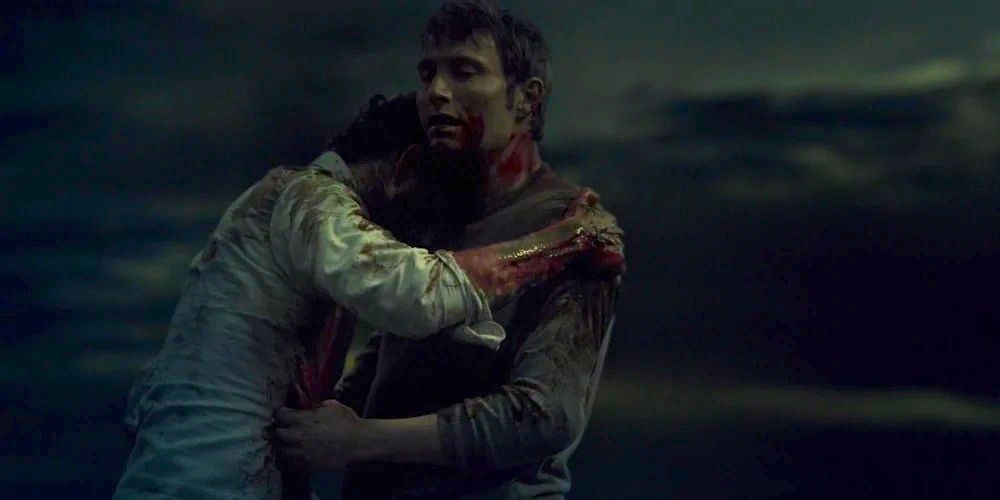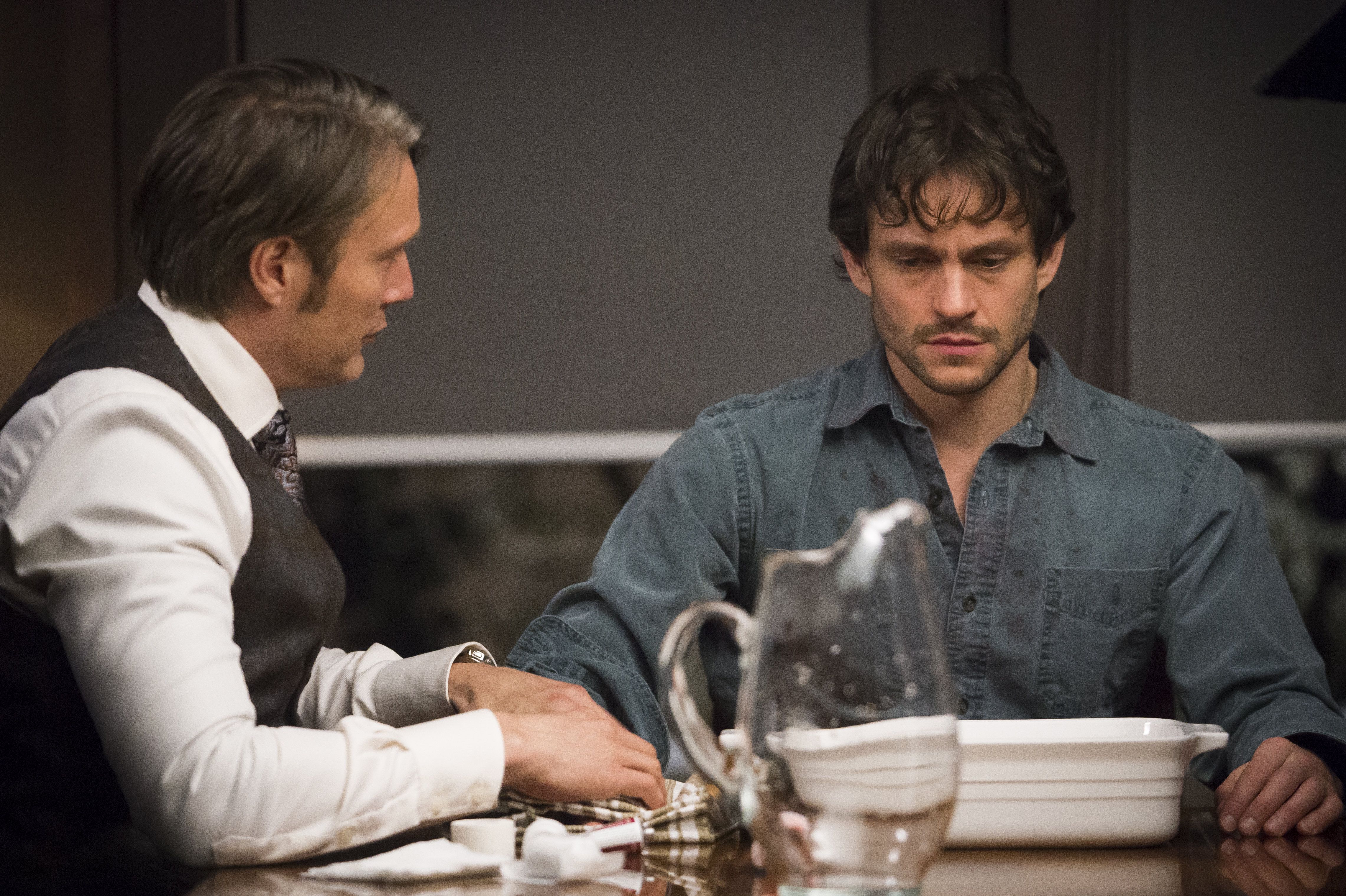“Queerbaiting” has long been a frustrating trope in popular media, with shows teasing same-sex romantic relationships to attract LGBTQ+ audiences without ever committing to implications. NBC’s Hannibal, which aired from 2013 to 2015, is a rare example of a show that subverted this trend. Ten years after its initial release and with the show recently celebrating its anniversary, Hannibal‘s pioneering approach to LGBTQ+ representation continues to have a lasting impact today.
In the horror genre, queer characters often fall victim to harmful stereotypes and become targets of the Big Bad, or they are portrayed as monsters themselves. It’s surprising, given that horror is often seen as a genre that belongs to the queer community. Horror stories exist outside what is typically deemed tolerable in society, something that LGBTQ+ people can relate to and thus gravitate towards as an audience. The lack of representation in a genre that is supposed to provide comfort only exacerbates the sense of exclusion already felt by underrepresented communities. It reinforces the idea that their stories are unworthy of being told and, as a result, do not matter.
‘Hannibal’ Slays Queer Stereotypes With Hannibal and Will
Hannibal stands out from other television shows because the show’s creators and stars allowed a romantic connection to develop naturally between the two characters rather than going back on the plot or using queerbaiting as a method of boosting viewership. This organic approach made it possible to represent a same-sex relationship in a deep and nuanced way that defies stereotypes and clichés. In a genre that hasn’t had the best track record when it comes to illustrating queer characters, Hannibal stands out as a rare example of a horror series that portrays a same-sex relationship in a potent and memorable way.
Bryan Fuller’s twist on Thomas Harris’ 1981 novel Red Dragon revolves around the relationship between FBI special investigator Will Graham (Hugh Dancy) and Dr. Hannibal Lecter (Mads Mikkelsen), a forensic psychiatrist who hasn’t yet been discovered as the notorious cannibalistic serial killer we’ve come to know in previous adaptations. The show is a blood-drenched horror-thriller about life and death, betrayal and forgiveness, good and evil, law and order, art and philosophy, and beauty in destruction. It’s a feast of art-inspired murder tableaus that are seasoned with hypnotic nightmare sequences and served with expensive wine. But above all, it’s a love story.
Hannibal and Will transition from friends to enemies, to “murder husbands” in what can only be described as a larger-than-life, beyond-comprehension romance that is reminiscent of a Greek epic. It’s the kind of love that inspires poems, music, and art worthy of the U.S. Capitol’s walls. What makes their love feel so authentic is that their story evolved the way feelings do: organically. Despite the immediate chemistry between the show’s two male leads, the writers originally intended for their relationship to be purely platonic. However, as the show progressed, the actors’ performances and the characters’ interactions became increasingly charged with undeniable intimacy.
“It naturally evolved because I guess I was absorbing so much of Mads and Hugh’s performance, which felt like it was growing in intimacy, and it would have been inauthentic not to address it. Because all of these characters, and particularly Bedelia, was able to call out what she had witnessed [between Hannibal and Will], it seemed like a natural conclusion,” Fuller said in a 2015 Digital Spy Interview.
According to Fuller, the decision to turn subtext into text was supported by many of the cast and writers, including Don Mancini, best known for creating the Child’s Play franchise. When Bryan turned in the rewrite pages where Will asks Bedelia if Hannibal is in love with him, Mancini expressed his appreciation, saying, “I’m so glad you put that in there! They said it! They said it!” Mancini’s advocacy for more explicit LGBTQ+ representation on the set of Hannibal is reflected in his recent success with his horror series, Chucky, which has been praised for its positive queer representation. He attributes his inspiration for telling Chucky’s story unapologetically to his experience in the Hannibal writers room. This underscores the significance of creating a safe space for storytellers to truthfully present diverse narratives and advocate for inclusivity in media, which can aid in the continual progression of representation in the industry.
‘Hannibal’ Shows Queer Love in Full Bloom With Margot and Alana
While Hannigram (the portmanteau for the Will/Hannibal dynamic) was expertly transitioning from ship to script, another queer romance was also blossoming on Hannibal between female leads Margot Verger (Katharine Isabelle), who was canonically a lesbian in the books and show, and Dr. Alana Bloom (Caroline Dhavernas), a gender-swapped version of her book counterpart Alan Bloom, who had previously only been romantically and physically involved with Will and Hannibal on screen. When Fuller received criticism for the storyline, he replied, “No, she’s bisexual, she’s always been bisexual, and stop being so narrow in your perception of sexuality.”
Similar to Hannigram’s natural canon development, it was Dhavernas who originally pitched the relationship, as discussed in DVD commentaries for the second season. She felt what Fuller had felt, which was that her character needed a change, and a relationship with Margot was a natural progression for her. Ever the supportive partner, her on-screen murder-wife-to-be was on board with it immediately. At the Hannibal Nerdist Reunion in 2020, Isabelle reflected on the experience of finding out about the plans for her character, saying, “It was so obvious to me from the beginning. When those two got together, I wasn’t like ‘Oh, wow,’ I was like, ‘OH YES!'” She described the two women as “this calm center at the storm of maniacs” that she knew were going to be okay when they got together and Final Girl-ed their way out of there.
The most beautiful thing about both relationships is that none of the characters involved were defined by their sexuality. They were four well-written, complex characters that just happened to be queer. Not only did that faithfully capture what it means to be a queer person, but it also challenged viewers’ perspectives, correcting the assumption that characters (and people) are straight unless they verbally say otherwise. Sexuality is a spectrum, and Hannibal reminded us that we should never claim to know anyone’s sexual preferences.
‘Hannibal’s Endgame Was Informed by the Actors’ Chemistry
Although the story focuses on Hannibal and Will, it does not revolve around the fact that they are queer. The show focuses on the dynamics of power, trust, and betrayal between two individuals who just happen to be men. This refined approach eliminates the idea that queerness is the defining trait of queer characters. The relationship is an integral part of the show’s narrative and character development, offering a deeper understanding of their motivations, desires, and vulnerabilities. It challenges traditional notions of masculinity and heteronormativity and showcases the power of thoughtful storytelling.
One of the key elements that made this possible was the chemistry between Mikkelsen and Dancy. Both actors brought a raw intensity to their roles that made their connection impossible to ignore. As the show progressed, the characters’ interactions became increasingly intimate, with moments of tenderness and vulnerability that felt genuine. Another factor that contributed to Hannibal‘s success in portraying a same-sex relationship was the show’s willingness to explore the complexities of the characters’ emotions. Hannibal Lecter and Will Graham are both deeply flawed individuals with complicated histories and conflicting desires. By allowing their romance to develop naturally, the show was able to delve into the complexities of their relationship and create a nuanced portrayal of same-sex love.
Perhaps most importantly, Hannibal was able to avoid falling into the trap of queerbaiting by committing to the relationship between Hannibal and Will. Rather than teasing the audience with hints of a possible romance without ever following through, the show allowed their love to unfold in a way that felt authentic and earned.
‘Hannibal’s Lasting Influence on LGBTQ+ Representation in Horror
Hannibal’s portrayal of a same-sex romance broke ground in mainstream horror media, providing a rare example of authentic LGBTQ+ representation. The show’s commitment to allowing Hannibal and Will’s romance to unfold naturally resulted in a nuanced and genuine depiction of same-sex love that stood in stark contrast to the harmful queerbaiting trope. As fans affectionately refer to it, Hannibal is the story of “the Gays who bury everyone else,” turning the problematic Bury Your Gays trope on its head.
Since Hannibal‘s top-tier final episode aired, it has continued to inspire countless fanworks, discussions, and analysis, with viewers praising its unfeigned portrayal of LGBTQ+ characters. While there is still much work to be done in terms of LGBTQ+ representation in popular media, Hannibal’s approach offers a positive example of how it should be approached. As we celebrate the show’s 10th anniversary, we can look back on it as a powerful statement of the importance of telling diverse stories in mainstream media. That’s Hannibal’s design.
Stay connected with us on social media platform for instant update click here to join our Twitter, & Facebook
We are now on Telegram. Click here to join our channel (@TechiUpdate) and stay updated with the latest Technology headlines.
For all the latest TV News Click Here




